BY DEFENCE JOURNALIST SAHIL | T.I.N. NETWORK
Chetak Corps Deepens Military–Civil Fusion Across Rajasthan: Gandiv Division and Amogh Division Lead Coordinated Push for National Integration and Grassroots Synergy
In a significant and far-reaching development underscoring India’s “Whole of Nation” philosophy, formations under the Chetak Corps have launched an expansive series of initiatives aimed at strengthening Military–Civil Fusion across Rajasthan. The effort, rooted in long-term integration between the Armed Forces and civil administration, is designed to reinforce collaborative governance, enhance security readiness, and build a unified ecosystem for national development.
The initiatives—led prominently by the Gandiv Division in Kota and the Amogh Division in Sri Ganganagar—are being viewed as a major push to harmonise military capabilities with civilian frameworks, ensuring a seamless flow of information, resources and cooperation that ultimately strengthens national security at every tier.
Gandiv Division’s Strategic Engagement in Kota
The Gandiv Division, commanded by Maj Gen S.C. Kandpal, undertook a high-level civil–military interaction that is being perceived as one of the most important outreach efforts in the region in recent months. Maj Gen Kandpal met Shri Om Birla, Member of Parliament from Kota and Hon’ble Speaker of the Lok Sabha, for a detailed conversation on enhancing coordination, mutual support mechanisms and joint developmental priorities.
The meeting extended beyond courtesy and delved into practical, actionable pathways to integrate military expertise with civil administration, particularly in the spheres of disaster management, emergency preparedness, infrastructure support and local-level community initiatives. According to people familiar with the meeting, both sides emphasised the importance of forging deeper connectivity between the Army and the people—something Rajasthan’s border and desert districts have historically valued due to the Army’s widespread presence.
Officials within the defence ecosystem described the interaction as “forward-looking, strategically grounded, and aligned with national objectives,” especially given the growing emphasis on civil defence preparedness, the increasing frequency of climate-driven emergencies, and the need for improved coordination between Armed Forces and local administrative bodies.
Amogh Division’s Ground-Level Outreach in Sri Ganganagar
While Gandiv Division focused on high-level institutional engagement, the Amogh Division activated outreach at the grassroots level by organising a comprehensive meeting with civil administration officials and various Gram Panchayats in Sri Ganganagar district.
The discussions revolved around operational synergy, community-level awareness, better coordination during emergencies, capacity building of local leadership and closer communication channels between military units and rural communities. Sri Ganganagar’s strategic location along the India–Pakistan border adds greater importance to these engagements, as the region plays a crucial role in both security and agricultural logistics for the nation.
The meeting reportedly saw active participation from village representatives, local bureaucrats and military officers, who highlighted key areas where military–civil fusion can bring tangible benefits—from village defence awareness to infrastructure improvements, joint disaster-response protocols and civic action initiatives aimed at improving the socio-economic fabric of rural populations.
A Push Aligned With National Security Vision
India’s evolving military doctrine places significant emphasis on the need to integrate civilian capacities with defence preparedness, especially across critical regions. Military–Civil Fusion (MCF) is increasingly being recognised as an essential tool for ensuring rapid mobilisation, resilient governance and efficient utilisation of national resources.
The Chetak Corps’ recent initiatives signal a renewed commitment to this doctrine. By blending strategic-level dialogue with ground-level engagement, the Corps is setting a template for how military formations and civilian institutions can work hand-in-hand as equal partners in nation-building.
Rajasthan—home to vast stretches of the western border, major defence cantonments and key strategic infrastructure—remains one of the most important states for implementing this integration model. The synergy generated between formations such as Gandiv Division and Amogh Division with the local administrative machinery helps ensure that civil defence mechanisms remain robust, communities stay informed, and governance becomes deeply collaborative.
Enhancing the ‘Whole of Nation Approach’
The initiatives resonate strongly with the national leadership’s call for a “Whole of Nation Approach,” an evolving strategy where every pillar of society—military, governance, industry and citizens—contributes holistically to India’s security and developmental goals.
The meetings in Kota and Sri Ganganagar stand as clear indicators that the Armed Forces are not only guardians of the nation’s borders but also active stakeholders in the country’s social, administrative and developmental ecosystem. By encouraging dialogue, identifying common objectives and implementing shared solutions, the Chetak Corps is fostering what defence planners describe as “Unity of Effort and Purpose.”
Building Confidence, Preparedness and National Strength
Such civil–military coordination is instrumental in building public trust, improving preparedness for crises and strengthening national resilience. The Armed Forces have repeatedly demonstrated that close cooperation with civil authorities leads to faster disaster response, better utilisation of logistical capabilities, and more informed governance decisions.
For communities, especially in rural and border regions, these engagements strengthen bonds with the military, instil confidence in local security ecosystems and promote a sense of shared responsibility in nation-building. For the Army, it provides a clearer understanding of ground realities, administrative challenges and community aspirations—critical factors that enhance operational effectiveness during real-world contingencies.
A Model for Future Military–Civil Fusion Efforts
The initiatives by Gandiv Division and Amogh Division under Chetak Corps could become a model for other formations across the country. As India steps into an era defined by technological advancement, integrated warfare, climate uncertainties and border challenges, the importance of seamless military–civil cooperation cannot be overstated.
By establishing robust channels of communication, building institutional trust and implementing cooperative frameworks, the Army and civil administration together create a powerful national architecture capable of withstanding crises and pushing developmental growth simultaneously.
Conclusion: A Unified Path Towards Nation Building
The recent moves by the Chetak Corps signify more than just routine interdepartmental meetings—they represent a strategic, coordinated and forward-looking effort to integrate India’s defence strength with its civilian governance capabilities. The engagements with Lok Sabha Speaker Om Birla in Kota and grassroots representatives in Sri Ganganagar highlight a balanced and comprehensive approach to nation-building.
As India continues to strengthen its security posture and expand its developmental ambitions, Military–Civil Fusion stands as a vital pillar supporting this national vision. The initiatives undertaken under the aegis of the Chetak Corps embody the spirit of unity, cooperation and shared purpose that define India’s journey towards a stronger and more resilient future.
BY DEFENCE JOURNALIST SAHIL | T.I.N. NETWORK
राजस्थान में सैन्य–नागरिक समन्वय को नई ऊँचाइयों पर ले गया चेतक कोर: गांधीव डिवीजन और अमोघ डिवीजन ने राष्ट्रीय एकीकरण और जमीनी स्तर की सहभागिता को दी नई दिशा
भारत के “Whole of Nation Approach” (राष्ट्र के समग्र दृष्टिकोण) को मजबूत करते हुए चेतक कोर के अधीन सैन्य इकाइयों ने राजस्थान में सैन्य–नागरिक एकीकरण को सुदृढ़ करने के लिए व्यापक और दूरगामी पहलें शुरू की हैं। यह प्रयास केवल औपचारिक बैठकें नहीं, बल्कि सैन्य और प्रशासनिक ढांचे को एकीकृत करने की दिशा में एक दीर्घकालिक, रणनीतिक और व्यवहारिक कदम है, जिसका लक्ष्य है सामूहिक शासन को सशक्त बनाना, राष्ट्रीय सुरक्षा को सुदृढ़ करना और विकास व सुरक्षा के बीच एक मजबूत पुल तैयार करना।
इन पहलों में कोटा स्थित गांधीव डिवीजन और श्रीगंगानगर में तैनात अमोघ डिवीजन की सक्रिय भूमिका सबसे अधिक प्रभावशाली रही। दोनों ही डिवीजनों ने ऐसे तंत्र विकसित किए जो सैन्य क्षमताओं को नागरिक प्रशासन के साथ जोड़ते हुए एक सुव्यवस्थित, संवादप्रधान और तेज़-प्रतिक्रिया तंत्र की नींव रखते हैं।
कोटा में गांधीव डिवीजन की रणनीतिक पहल
मेजर जनरल एस.सी. कांडपाल के नेतृत्व में गांधीव डिवीजन ने कोटा में उच्च-स्तरीय सैन्य–नागरिक संवाद स्थापित किया। इस संवाद का सबसे महत्वपूर्ण हिस्सा था मेजर जनरल कांडपाल और कोटा के सांसद व लोकसभा अध्यक्ष श्री ओम बिड़ला के बीच हुई विस्तृत बैठक, जिसमें सैन्य–नागरिक सहयोग बढ़ाने, आपसी समन्वय मजबूत करने और विकासात्मक प्राथमिकताओं पर गहन चर्चा हुई।
बैठक सामान्य शिष्टाचार से आगे बढ़कर व्यावहारिक सहयोग की दिशा में केंद्रित रही। मुख्य चर्चाओं में आपदा प्रबंधन, आपातकालीन संसाधनों की उपलब्धता, बुनियादी ढांचे का विकास, ग्रामीण समुदायों के साथ जुड़ाव और नागरिक प्रशासन के साथ एकीकृत प्रतिक्रिया प्रणाली जैसे विषय प्रमुख रहे।
क्षेत्रीय अधिकारियों के अनुसार यह संवाद “रणनीतिक, व्यवहारिक और राष्ट्रीय उद्देश्यों के अनुरूप” था और राजस्थान जैसे संवेदनशील, सीमावर्ती और रेगिस्तानी भूभाग वाले राज्य में इस प्रकार की सहभागिता अनिवार्य होकर उभर रही है।
श्रीगंगानगर में अमोघ डिवीजन की जमीनी पहुंच
गांधीव डिवीजन जहां संस्थागत स्तर पर संवाद स्थापित कर रहा था, वहीं अमोघ डिवीजन ने जमीनी स्तर पर गांवों और प्रशासन के बीच गहरी कड़ी स्थापित की। डिवीजन ने श्रीगंगानगर में जिला प्रशासन और विभिन्न ग्राम पंचायतों के साथ एक विस्तृत बैठक आयोजित की, जिसका उद्देश्य था:
— सैन्य और प्रशासनिक इकाइयों के बीच बेहतर तालमेल
— ग्रामीण समुदायों की सुरक्षा जागरूकता
— आपदाओं में संयुक्त प्रतिक्रिया
— स्थानीय नेतृत्व का क्षमता निर्माण
— सीमावर्ती क्षेत्रों की विशेष आवश्यकताओं को समझना
श्रीगंगानगर अपनी भौगोलिक स्थिति के कारण अत्यधिक रणनीतिक महत्व रखता है, क्योंकि यह भारत–पाकिस्तान सीमा के निकट स्थित है। ऐसे में यहां सैन्य–नागरिक सहयोग न केवल सुरक्षा को मजबूत करता है, बल्कि कृषि, जल प्रबंधन और ग्रामीण विकास जैसे क्षेत्रों में भी महत्वपूर्ण योगदान देता है।
ग्राम स्तरीय नेतृत्व और सैन्य अधिकारियों ने मिलकर अनेक बिंदुओं पर विचार किया—जिनमें गांवों में रक्षा जागरूकता कार्यक्रम, बुनियादी ढांचे को उन्नत करना, संयुक्त आपदा प्रतिक्रिया प्रणाली और ग्रामीण विकास के लिए सैन्य सहायता शामिल हैं।
राष्ट्रीय सुरक्षा के व्यापक दृष्टिकोण से मेल खाता कदम
भारत की बदलती सैन्य रणनीति में अब केवल सीमाओं की रक्षा ही नहीं, बल्कि नागरिक क्षमता, प्रशासनिक ढांचे और तकनीकी संसाधनों के एकीकरण को भी समान महत्व दिया जा रहा है। Military–Civil Fusion (MCF) की अवधारणा इसी संयुक्त दृष्टिकोण पर आधारित है, जो देश की समग्र सुरक्षा को मजबूत बनाती है।
चेतक कोर की हालिया पहलों ने इस अवधारणा को व्यवहारिक और परिणामात्मक रूप में स्थापित किया है। उच्च-स्तरीय संवाद और जमीनी सहभागिता का संतुलन यह दर्शाता है कि सेना और नागरिक संस्थाएं एक-दूसरे के पूरक हैं और संयुक्त रूप से एक मजबूत राष्ट्रीय ढांचा तैयार कर सकती हैं।
‘Whole of Nation Approach’ को नया आयाम
राष्ट्रीय नेतृत्व लगातार इस बात पर जोर देता रहा है कि सेना, सरकार, उद्योग और नागरिक—ये सभी राष्ट्र की सुरक्षा और विकास में समान भागीदार हैं। कोटा और श्रीगंगानगर में हुए ये दोनों संवाद इस सिद्धांत के मजबूत उदाहरण हैं।
ये बैठकें स्पष्ट करती हैं कि भारतीय सेना केवल सीमाओं की सुरक्षा ही नहीं करती, बल्कि देश के प्रशासनिक और सामुदायिक तंत्र का एक सक्रिय स्तंभ भी है। सामूहिक समाधान खोजने और साझा लक्ष्यों की दिशा में काम करने का यह दृष्टिकोण राष्ट्रीय सुरक्षा संरचना में “Unity of Effort and Purpose” को मजबूत करता है।
विश्वास, तैयारी और राष्ट्रीय लचीलापन का निर्माण
सैन्य–नागरिक समन्वय का सबसे महत्वपूर्ण लाभ है—लोगों और सैन्य संस्थाओं के बीच विश्वास का निर्माण।
संकट के समय यह विश्वास तेज़ और प्रभावी प्रतिक्रिया का आधार बनता है।
चाहे बाढ़, आंधी, भूकंप या अन्य आपदाएं हों—सेना की क्षमताओं और नागरिक प्रशासन के ज्ञान का संयुक्त उपयोग बेहतर परिणाम देता है।
ग्रामीण समुदायों के लिए यह पहल विशेष रूप से महत्वपूर्ण है, क्योंकि सीमावर्ती क्षेत्रों में लोगों का सेना के साथ संबंध हमेशा गहरा रहा है।
इन कार्यक्रमों के माध्यम से सेना को स्थानीय समस्याओं, ज़मीनी चुनौतियों और लोगों की अपेक्षाओं को समझने में मदद मिलती है, जो वास्तविक समय की सैन्य योजनाओं और संवेदनशील क्षेत्रों में कार्रवाई को अधिक प्रभावी बनाती है।
भविष्य के लिए एक आदर्श मॉडल
गांधीव और अमोघ डिवीजनों की ये पहल पूरे देश के लिए एक मॉडल के रूप में देखी जा सकती है।
तेजी से बदलते वैश्विक सुरक्षा वातावरण, जलवायु परिवर्तन से जुड़ी आपदाओं, तकनीकी प्रगति और सीमावर्ती चुनौतियों को देखते हुए सैन्य–नागरिक समन्वय अनिवार्य हो चुका है।
मजबूत संचार प्रणाली, संस्थागत विश्वास और सहयोगी ढांचा इस मॉडल की रीढ़ हैं—जिन्हें चेतक कोर ने बेहद प्रभावी ढंग से स्थापित किया है।
निष्कर्ष: राष्ट्र निर्माण की साझा दिशा
कोटा और श्रीगंगानगर की ये पहल केवल आधिकारिक बैठकें नहीं थीं—ये इस बात का उज्ज्वल प्रमाण हैं कि भारत की सैन्य शक्ति जब नागरिक प्रशासन और समाज के साथ मिलकर काम करती है तो राष्ट्रीय विकास और सुरक्षा दोनों गति पकड़ते हैं।
चेतक कोर के मार्गदर्शन में गांधीव डिवीजन और अमोघ डिवीजन द्वारा उठाए गए कदम आने वाले समय में सैन्य–नागरिक समन्वय को एक नई दिशा देंगे।
जैसे-जैसे भारत अपनी सुरक्षा, तकनीकी क्षमताओं और विकासात्मक महत्वाकांक्षाओं को आगे बढ़ा रहा है, Military–Civil Fusion उसकी रणनीति का एक अहम स्तंभ बनता जा रहा है।
इन पहलों ने स्पष्ट कर दिया है कि राष्ट्र निर्माण की यात्रा सामूहिक है—और सेना व नागरिक तंत्र मिलकर भारत को अधिक सुरक्षित, अधिक सशक्त और अधिक लचीला बनाते हैं।

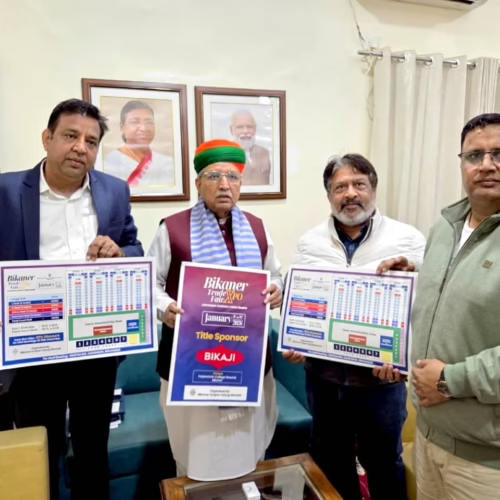

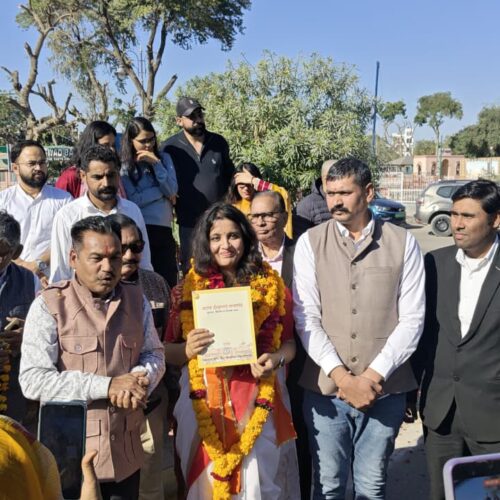

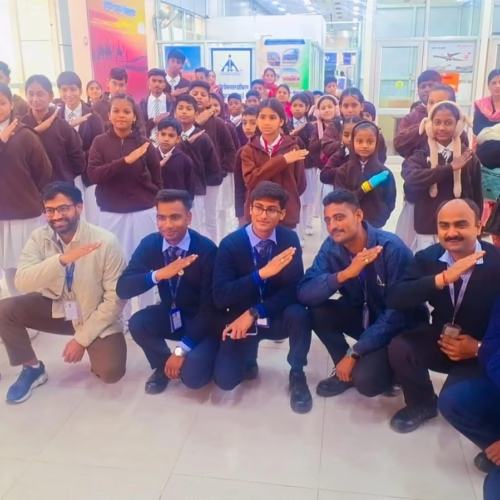
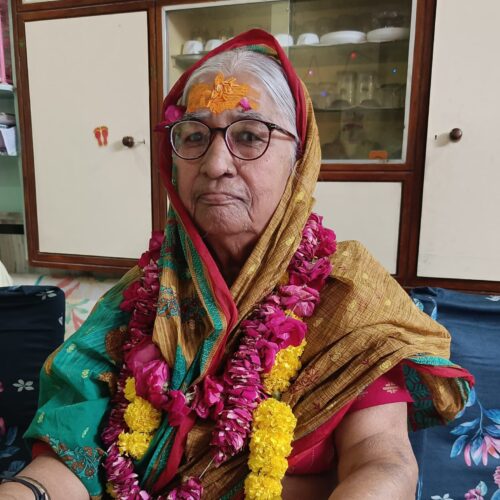


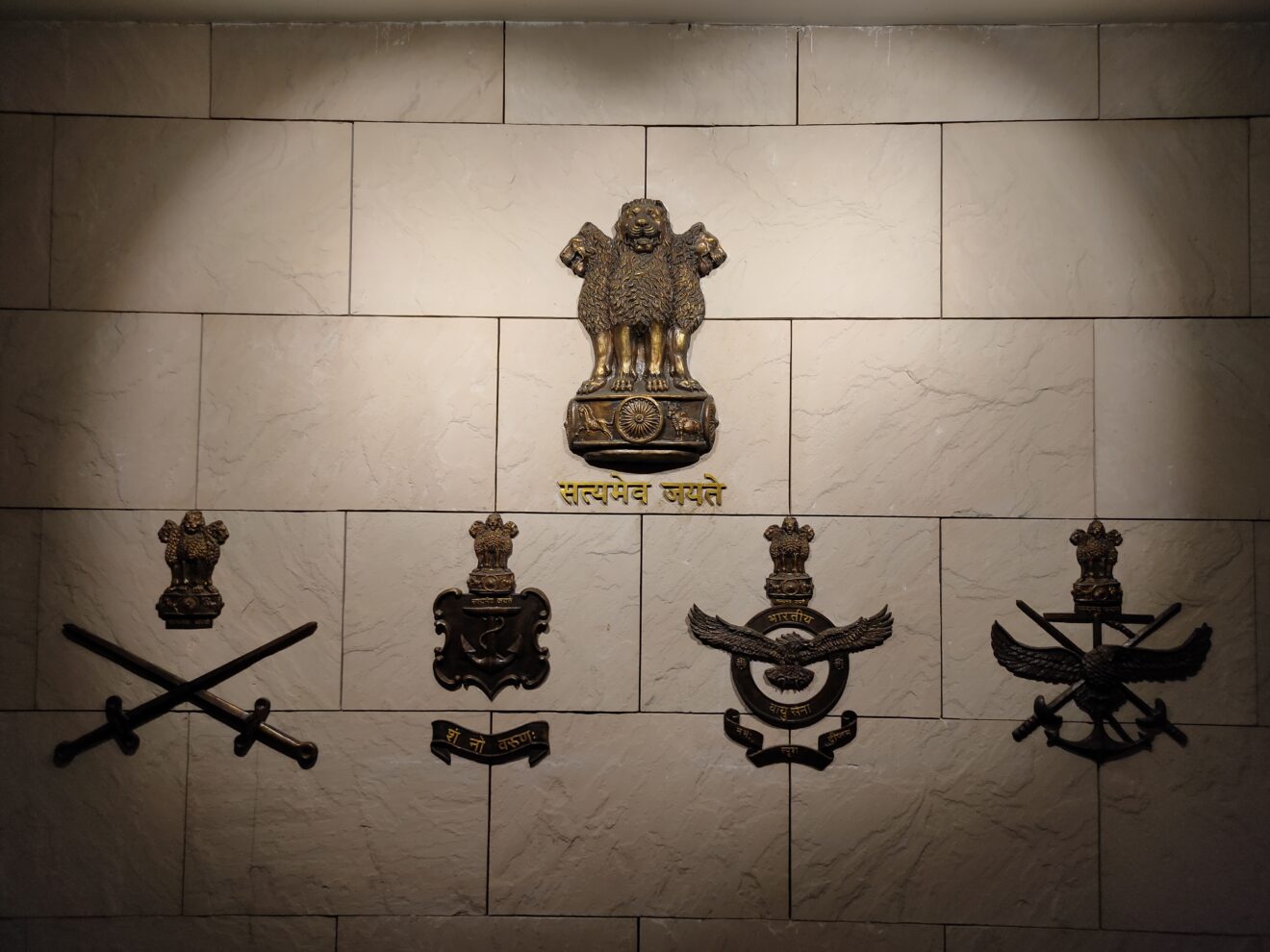




Add Comment